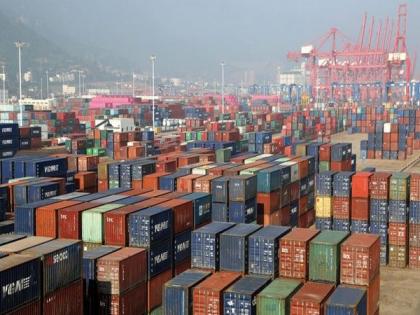India-UK FTA to boost pharma, engineering, chemical sectors with Zero-Duty access and huge export potential
By ANI | Updated: July 24, 2025 15:39 IST2025-07-24T15:34:21+5:302025-07-24T15:39:26+5:30
New Delhi [India], July 24 : The India-UK Free Trade Agreement (FTA) is set to unlock major export opportunities ...

India-UK FTA to boost pharma, engineering, chemical sectors with Zero-Duty access and huge export potential
New Delhi [India], July 24 : The India-UK Free Trade Agreement (FTA) is set to unlock major export opportunities for several key Indian sectors, offering zero-duty market access and a level playing field in the UK's large and diverse import market.
The food processing sector, which includes processed agricultural and food products, holds a 10.1 per cent share under the FTA coverage with 985 tariff lines.
This sector plays a key value-added role in the agri-food supply chain. India currently exports USD 14.07 billion worth of food processing products globally, while the UK imports USD 50.68 billion.
However, Indian exports to the UK are only USD 309.5 million, showing strong room for growth under the FTA.
India's plantation sector is also expected to benefit greatly. The UK already buys 1.7 per cent of India's coffee, 5.6 per cent of tea, and 2.9 per cent of spice exports. With duty-free access now available, these numbers are likely to grow quickly.
In particular, duty-free access on instant coffee will help Indian exporters compete better with European suppliers like Germany, Spain, and the Netherlands.
Engineering goods form the largest category under the FTA, with 1,659 tariff lines and a 17 per cent share.
This includes machinery, equipment, and components, highlighting the sector's importance. The UK is already India's 6th largest market for engineering exports.
These exports grew by 11.7 per cent in 2024-25, and the FTA is expected to further boost this momentum.
India's electronics exports, including smartphones, optical fiber cables, and inverters, are expected to increase with zero-duty access. The FTA is also expected to push software services growth.
The UK's strong commitments on Software and IT-enabled Services could help Indian firms tap into new markets. This sector is expected to grow at 15-20 per cent annually, with exports valued at USD 32 billion in 2024-25.
Although pharmaceuticals make up only 0.6 per cent of the tariff lines (56 lines), the sector is strategically important. India exports USD 23.31 billion worth of pharmaceuticals globally, while the UK imports nearly USD 30 billion. But Indian pharma exports to the UK are under USD 1 billion, showing strong potential for growth.
The chemicals sector has 1,206 tariff lines under the FTA, making up 12.4 per cent of total coverage. Products include fertilizers, petrochemicals, and industrial chemicals. India's chemical exports to the UK currently stand at USD 570.32 million, only around 2 per cent of India's global chemical exports.
However, the FTA is expected to increase these exports by 30-40 per cent, reaching USD 650-750 million in FY 2025-26.
India's gems and jewellery exports to the UK are valued at USD 941 million, with jewellery alone accounting for USD 400 million. The UK imports around USD 3 billion worth of jewellery every year. With the FTA's tariff relaxations, India's gems and jewellery exports are expected to double in the next 2-3 years.
Overall, the FTA is a major step in boosting India's export potential across key sectors, helping MSMEs and large exporters alike gain better market access, improve competitiveness, and drive growth.
Disclaimer: This post has been auto-published from an agency feed without any modifications to the text and has not been reviewed by an editor
Open in app